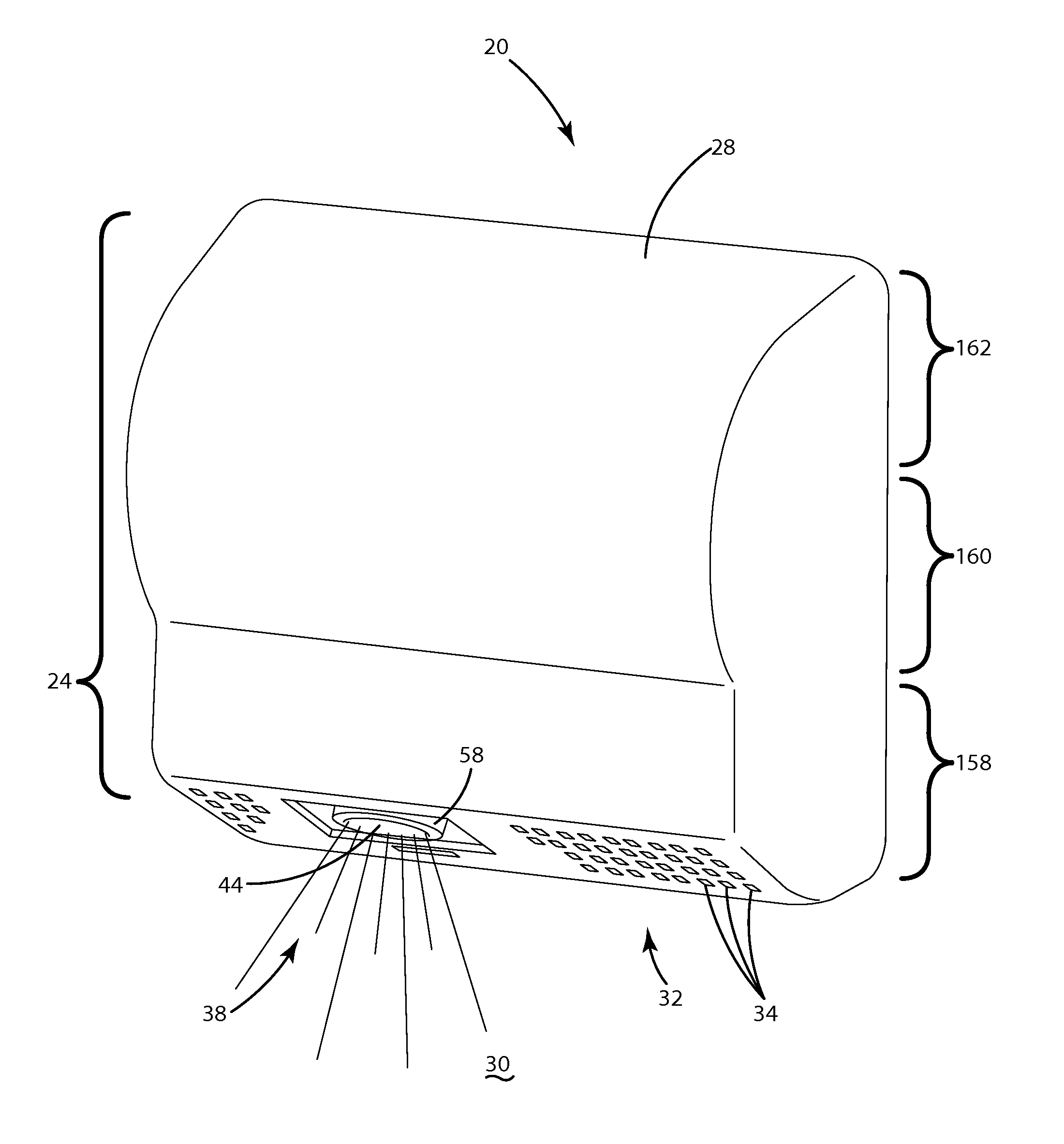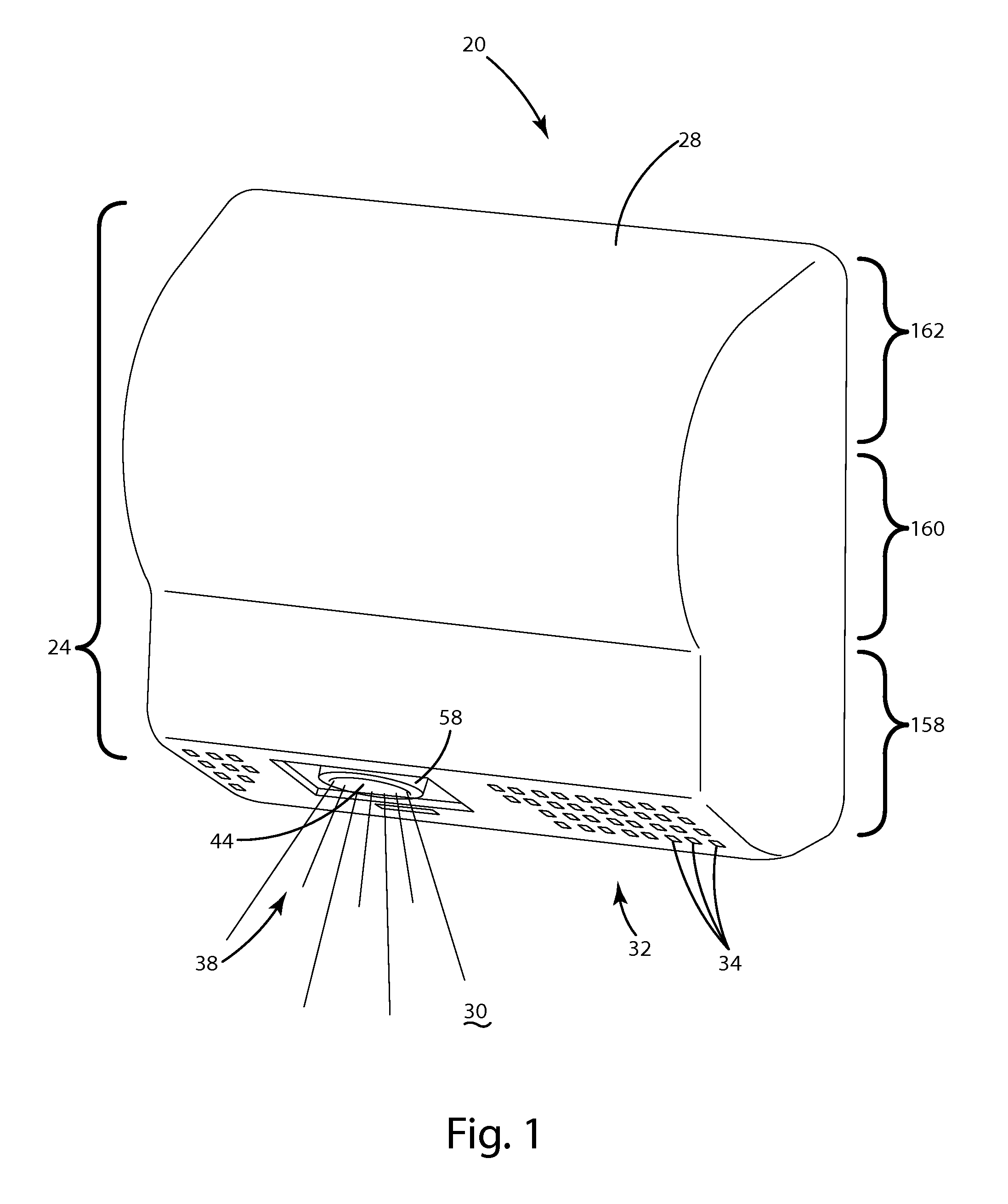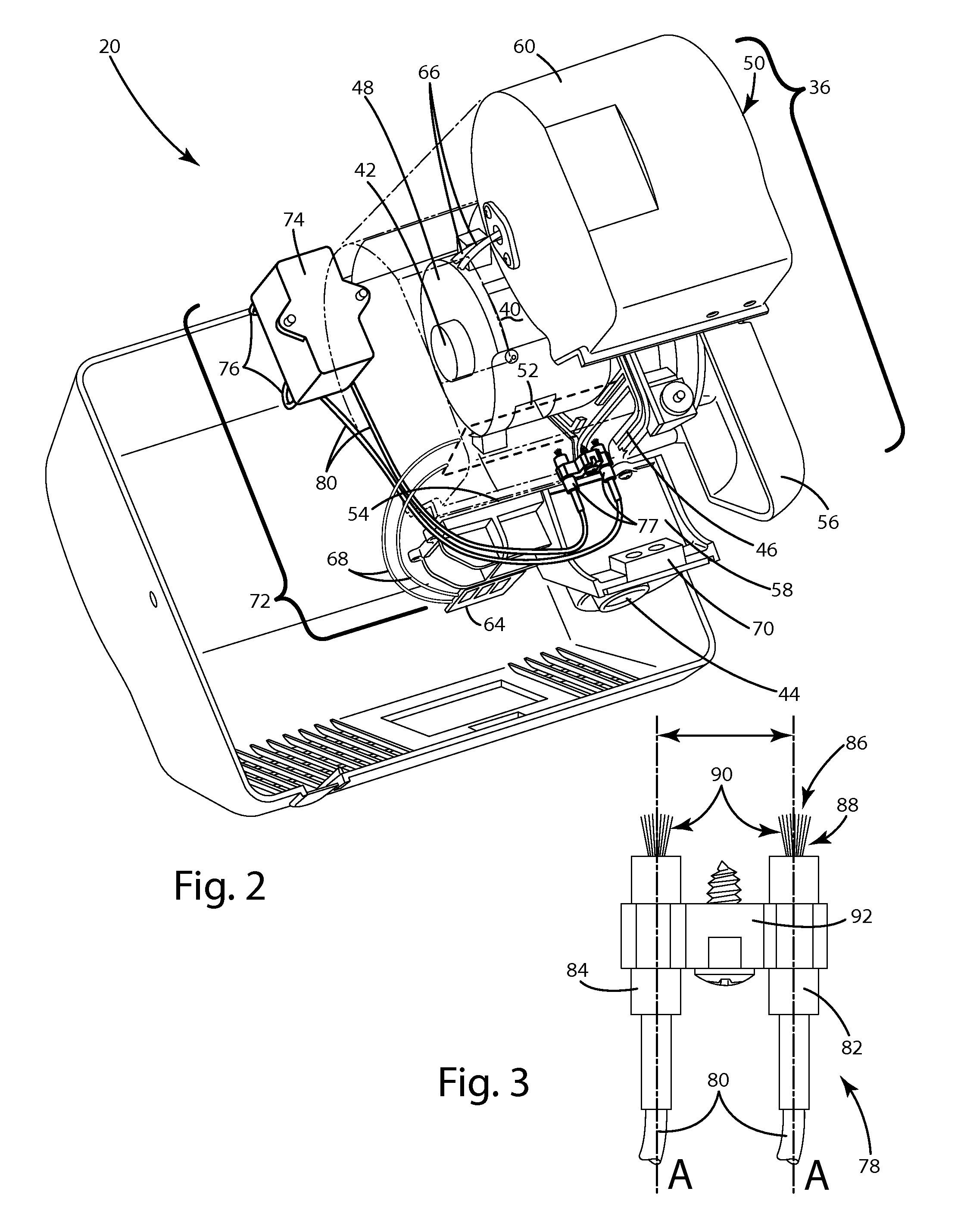Hand dryer with sanitizing ionization assembly
a technology of ionization assembly and hand dryer, which is applied in the direction of drying machines, lighting and heating equipment, electrical supply techniques, etc., can solve the problems of unsatisfactory production of ozone, and achieve the effects of reducing the amount of active microorganisms, and eliminating the cost and downtim
- Summary
- Abstract
- Description
- Claims
- Application Information
AI Technical Summary
Benefits of technology
Problems solved by technology
Method used
Image
Examples
Embodiment Construction
[0053]Referring to the Figures, wherein like numerals indicate corresponding parts throughout the several views, a hand dryer assembly 20 for mounting on a support structure 22 and for drying the hands of a user is disclosed.
[0054]As illustrated in FIGS. 1-28, the hand dryer assembly 20 has a housing 24 including a backplate 26 and an outer shell 28. The backplate 26 is configured to mount against the support structure 22. Typically, the support structure 22 is the wall of a washroom where users use the hand dryer assembly 20 to dry their hands after washing them. An outer shell 28 is attached to the backplate 26 of the hand dryer assembly 20. Generally, many of the components of the hand dryer assembly 20 are disposed within the housing 24. Surrounding the outer shell 28 is ambient air 30. The outer shell 26 includes an air inlet 32 for receiving the ambient air 30 disposed outside of the outer shell 28. More particularly, air inlet 32 may be a plurality intake vents 34 disposed in...
PUM
| Property | Measurement | Unit |
|---|---|---|
| center-to-center distance | aaaaa | aaaaa |
| center-to-center distance | aaaaa | aaaaa |
| temperature | aaaaa | aaaaa |
Abstract
Description
Claims
Application Information
 Login to View More
Login to View More - R&D
- Intellectual Property
- Life Sciences
- Materials
- Tech Scout
- Unparalleled Data Quality
- Higher Quality Content
- 60% Fewer Hallucinations
Browse by: Latest US Patents, China's latest patents, Technical Efficacy Thesaurus, Application Domain, Technology Topic, Popular Technical Reports.
© 2025 PatSnap. All rights reserved.Legal|Privacy policy|Modern Slavery Act Transparency Statement|Sitemap|About US| Contact US: help@patsnap.com



